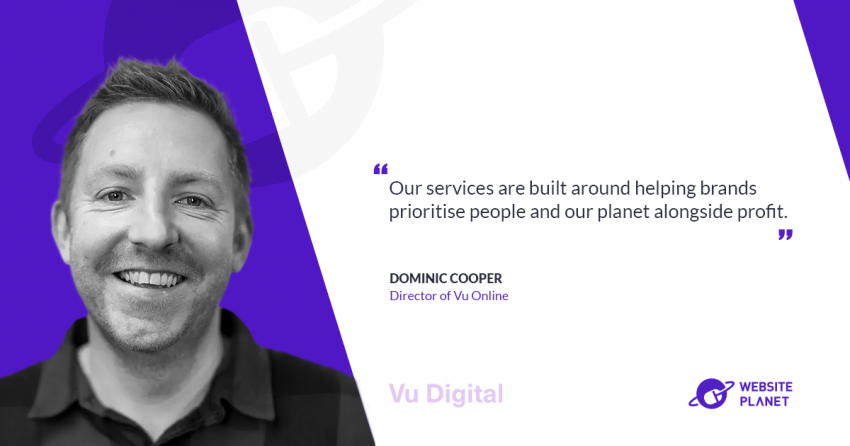Introduce Buttondown. How did the idea come to mind, and how did you validate it?
Before starting Buttondown, I was using another email marketing tool that was really not designed for my use case – I had my personal newsletter that wasn’t meant to make money. I wasn’t trying to build a business or anything like that. I just had a couple of hundred people (friends, family, acquaintances, etc. ), and I wanted to easily send emails to them. I didn’t want to roll it into some big e-commerce thing or anything like that. I just wanted to share updates with folks, easily get in, get out, focus on the writing and the post. None of the existing tools in this super competitive ecosystem of email marketing really did that. So I thought, “Why don’t I build a better version of this?” It took time to get from zero to an app that I want to use over anything else that’s out there. My goal was to build something that I was excited to use for myself, but, as I started showing Buttondown to others, I realized that there was indeed a market for it. “Oh, maybe I need to position this as a commercial application instead of just a little internal tool.” It was really about focusing on that unique part of such a competitive landscape that wasn’t interested in everything else other than sending newsletters and measuring their impact. That approach worked exactly because email marketing is such a huge, competitive market.Email marketing is competitive because there is a huge demand attracting really, really big players.
But that means that you can still build something that serves the needs of 0.1% of such a market perfectly to make a good profit.
It might not be enough to sustain a new Mailchimp, but it can be more than enough to make a great living for a solopreneur and his small team.
How small online entrepreneurs manage to thrive in competitive niches:
- They start from a problem they have in their current life or job, and develop a tool to fix it
- They validate the product-market fit of their solution with the help of few early adopters
- They focus on that tiny portion of the market that has their same exact problem
How does Buttondown compare to other big players like GetResponse or ActiveCampaign?
Buttondown is more focused. It’s designed for people who want to send newsletters without dealing with the complexities of other platforms. We’re not about marketing automation, SMS, or all the bells and whistles. We cater to those who want to focus on email and understand how it performs. Integrations-wise, we have connections with Zapier, webhooks, and a REST API. For most users, Zapier already covers a lot of needs. So, it’s a tool for people who want to send newsletters and nothing else. No added complexities, just focus on sending emails and understanding their impact. For those who need a little more, Buttondown has three main types of integrations: Zapier, a generic webhooks system, and a REST API. For most use cases, Zapier is the go-to choice, as it covers a wide range of services. More complex cases might involve webhooks or the API, but we try to keep functionality in-house for the best user experience possible. Having flexible integrations while maintaining a strong user experience is important, but it’s Buttondown’s simplicity that gives the strategic advantage. And the market indeed resonated well with that. People appreciate being able to quickly send newsletters and move on to other tasks. This approach has led to better engagement and adoption among our target users, who used to spend hours on their weekly marketing blasts and can now do it in a fraction of the time. That’s a result of the efficiency Buttondown offers. Our mission is to minimize the time users spend on our tool and their email marketing tasks, allowing them to dedicate more time to other important aspects of their work. We win if we get you the exact same business results that you were getting with another tool, but with you spending less time clicking around and dealing with all the various cries in doing it. Complexity doesn’t always equal value, and there’s still a lack of solutions for those who prefer a simpler approach. Some emails that I get from our users prove that… “It used to take me five hours every week to just send out our weekly marketing blast. I can now do it in like 15 minutes and I get an automated email telling me what the results are and then I’m off doing the other tasks.” We’re not trying to be everything for everyone. Instead, we want to excel in serving the needs of a specific group of users who value our approach. This targeted approach is a smart way to differentiate yourself in a competitive market. Besides that, a lot of authors, publisher houses, and agencies are using Buttondown, largely because the amount of money they’re spending on Clubeo, Active Campaign or Constant Contact is crazy high for the actual number of features they are actually using. All they’re trying to do is manage a bunch of email lists and make sure everything is in sync.How have you grown Buttondown’s user base over time?
Of course, being in such a crowded market is like a double-edged sword because you don’t get a lot of customers for free, so to speak… You have to prove your worth, but you already have so many people trying to get a service that you have some of the marketing coming for you and solved for you, which is at least useful. Besides that, our growth has been primarily organic – Word of mouth and recommendations from satisfied users have played a significant role. Additionally, being active on platforms like Twitter and engaging with the community has helped increase our visibility. Leveraging organic growth and community engagement can be incredibly powerful for building a sustainable user base. Building a strong relationship with our users and addressing their needs has been a key driver of our growth. * * He is not alone – Webflow, Notion, Zapier, and over half of Forbes Cloud 100 for this year have invested early in building their own community. Interviews and media appearances definitely have helped a lot, although I don’t think it was an explicit strategy. I do try to say yes whenever possible, because interviews are a great way to reach people outside of the bubble of my pre-existing audience.I don’t remember one time I’ve regretted saying yes. On SEO, my philosophy has been more around “make sure I’m not screwing up anything” than “explicitly build towards hitting certain keywords”. Ahrefs has been great for that — they basically alert me if I ever have broken meta tags, missing links, that sort of thing, and I work really hard to resolve those ASAP. Tl;DR The 3 pillars of Buttondown’s organic growth- Engage with the community
- Interviews
- Technical SEO














